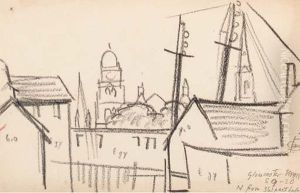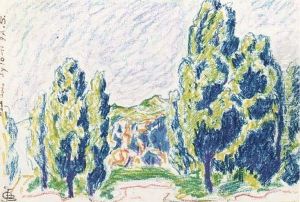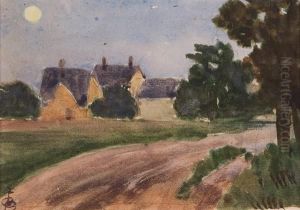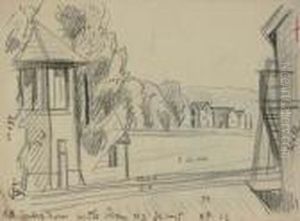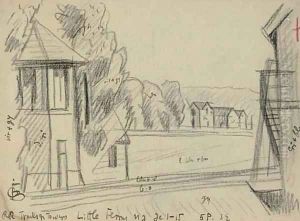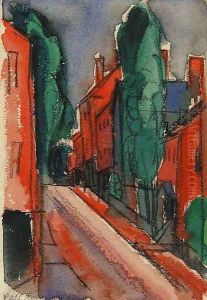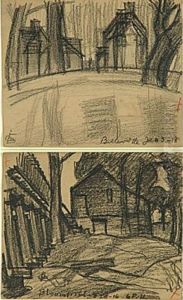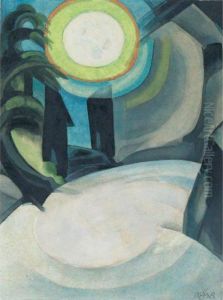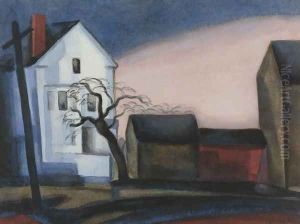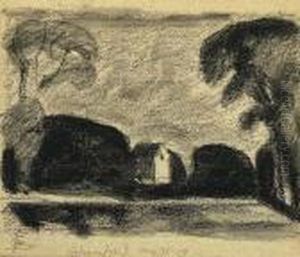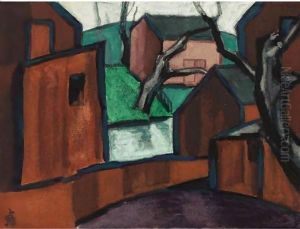Oscar Bluemner Paintings
Oscar Bluemner, born Friedrich Julius Oskar Blümner on June 21, 1867, in Prenzlau, Germany, was a German-American painter who played a significant role in the development of American modernism. Trained as an architect in Germany and then emigrating to the United States in 1892, Bluemner initially worked on architectural projects, including the design for the Bronx Borough Courthouse in New York City. However, his passion for painting eventually took precedence, leading him to pursue art full-time.
Bluemner's artistic journey was profoundly influenced by his exposure to the burgeoning avant-garde movements of the early 20th century. His work evolved from the more traditional landscapes and architectural designs to bold, expressive compositions, characterized by vibrant colors and dramatic geometries. Bluemner was deeply inspired by the synesthetic theories of color and emotion, which are evident in his use of intense, often symbolic hues to convey mood and atmosphere.
In 1913, Bluemner's work was included in the seminal Armory Show in New York, which introduced American audiences to European modernism and helped to catalyze the American modernist movement. Though his work received mixed reviews, Bluemner continued to develop his distinctive style, often depicting the American landscape with a unique blend of emotional resonance and abstraction.
Bluemner's life, however, was marked by financial struggles and personal tragedy, which influenced the somber tones and themes that pervade much of his later work. Despite his hardships, he continued to exhibit his work and was supported by influential patrons and galleries, including the renowned photographer Alfred Stieglitz, who showcased Bluemner's work at his 291 Gallery.
Sadly, Bluemner's career was cut short by his death on January 12, 1938, in Braintree, Massachusetts, after he took his own life. His legacy, though underappreciated during his lifetime, has grown posthumously, with his paintings now recognized as important contributions to American modernist art. Bluemner's work is held in prestigious collections around the world, including the Metropolitan Museum of Art and the Whitney Museum of American Art in New York City.
